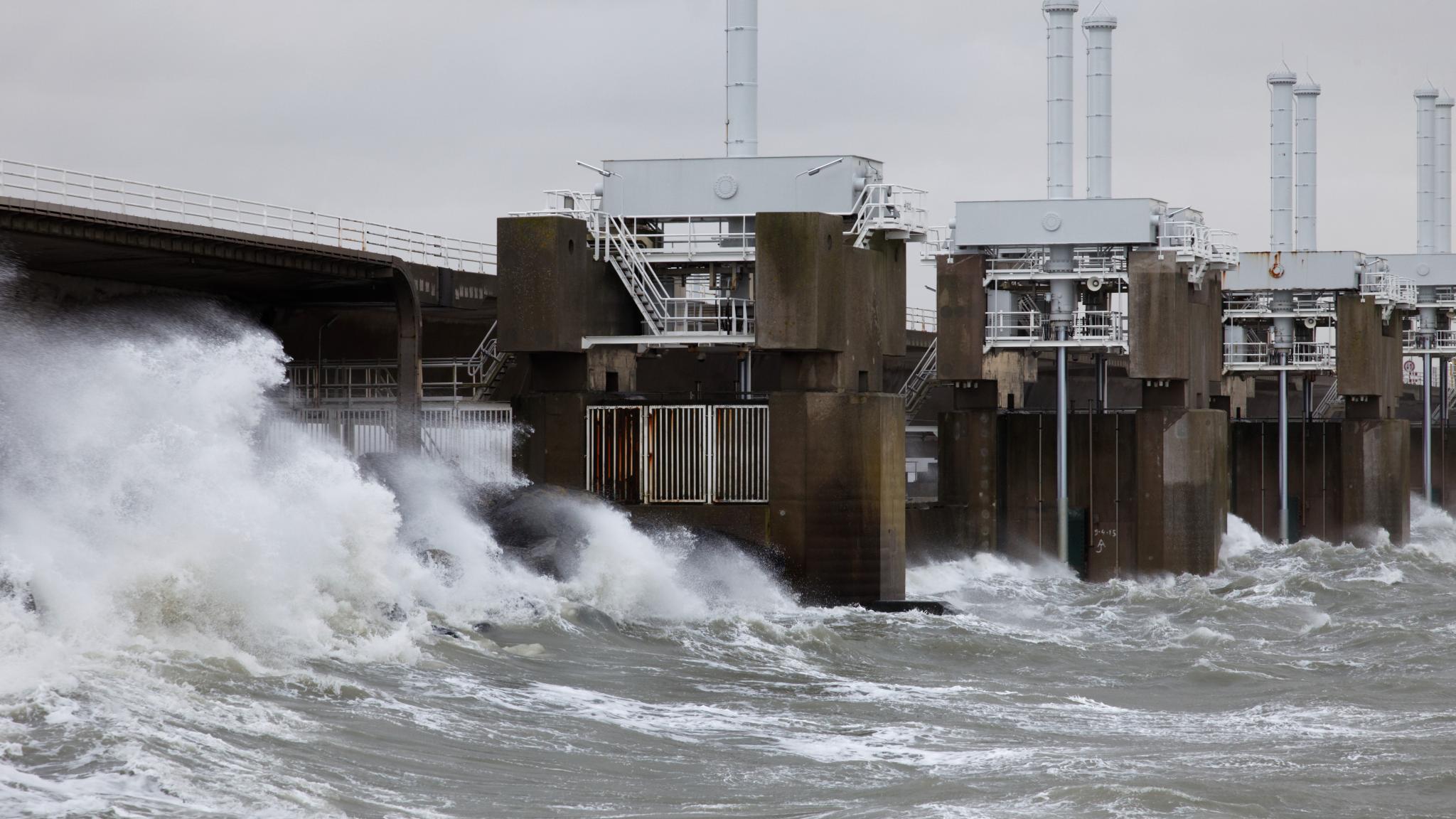Coastal squeeze is bad for biodiversity, and for us!

Worldwide, coastal areas are squeezed between a rising sea level on one end and human structures on the other. The distance between a sandy coastline and the first human structures averages less than 400 meters around the world. And the narrower a coastline is, the lower its biodiversity as well. That is shown by the thesis that coastal ecologist Eva Lansu will defend at the University of Groningen on May 20th. “This coastal squeeze is not only a problem for biodiversity, it also affects our defense against flooding and our drinking water supply”, Lansu says.
For her research, Van de Ven and colleagues visited salt marshes and dunes from Denmark to France. In several places, they mapped exactly how young plants spread in the environment. Van de Ven: "The small cord-grass plants thus appear to grow in clusters, allowing water to flow between the clusters with relatively little resistance. This way of growing reduces the risk of being washed away or damaged in the extremely dynamic environment of tidal wetlands. Only when they have grown larger, new shoots fill the space between clusters, slowing down the current and dampening the impact of waves. At that point, the plants also begin to trap sand or silt, literally raising their immediate environment. In this way, they grow out of the danger zone, where waves and currents have less control over them."
Constructions close to the sea make coastal areas extra vulnerable, Lansu emphasizes in her dissertation. “The narrower a coast, the sooner you will run into problems with rising sea levels.” In addition to those weaker defenses, narrower coasts are also bad news for biodiversity, Lansu found in a comparative study in both the Netherlands and the United States. In the Netherlands, together with colleagues, Lansu visited 35 dune areas. In each of these areas, they walked a transect perpendicular to the coastline and determined plant diversity every hundred meters. She did the same along 12 transects in the states of Florida and Georgia. Lansu: "It was clear that the wider the coast was, the greater the plant diversity. Especially the first two kilometers, that diversity increased rapidly."
In the Netherlands, only coastal areas of at least 3.8 kilometers wide reached their maximum plant diversity. "But unfortunately, such wide zones are rare. Dutch dune areas are on average no more than one kilometer wide, leaving plant diversity stuck at half the possible level," Lansu said.

Washington Oaks Florida (USA) coastal squeeze - photo by Orlando Cordero
Manage better or plan smarter
The limited biodiversity in narrow coastal strips can be boosted to some extent by nature management. But much more important, Lansu argues, is spatial planning. "We will have to take into account rising sea levels and avoid further hardening our coasts. We also need to start looking at coastal expansion, as has been done in the Netherlands with the ‘Sand Motor’ near the village of Monster."
The Sand Motor is a place where a gigantic amount of sand was deposited off the coast once in 2011, only to have it spread naturally along the coast. Lansu: "At that spot you can already see quite a few embryonic dunes forming on the newly raised beach. But future coastal expansion could stimulate natural sand dynamics and associated biodiversity even better. After all, biodiversity is not a luxury. It is our insurance for the future, for coastal defense, drinking water supply and in general also for our food supply."
"After all, biodiversity is not a luxury. It is our insurance for the future, for coastal defense, drinking water supply and in general also for our food supply."

A selection of photos
to test the carrousel
Myron
Voorbeeld van Readmore
Lorem ipsum dolor sit amet, consectetur adipiscing elit. Duo Reges: constructio interrete. Utrum igitur tibi litteram videor an totas paginas commovere? Hoc ille tuus non vult omnibusque ex rebus voluptatem quasi mercedem exigit. Tu enim ista lenius, hic Stoicorum more nos vexat. Quamquam te quidem video minime esse deterritum. Quo modo autem philosophus loquitur? Maximas vero virtutes iacere omnis necesse est voluptate dominante. Peccata paria. Sed hoc sane concedamus.